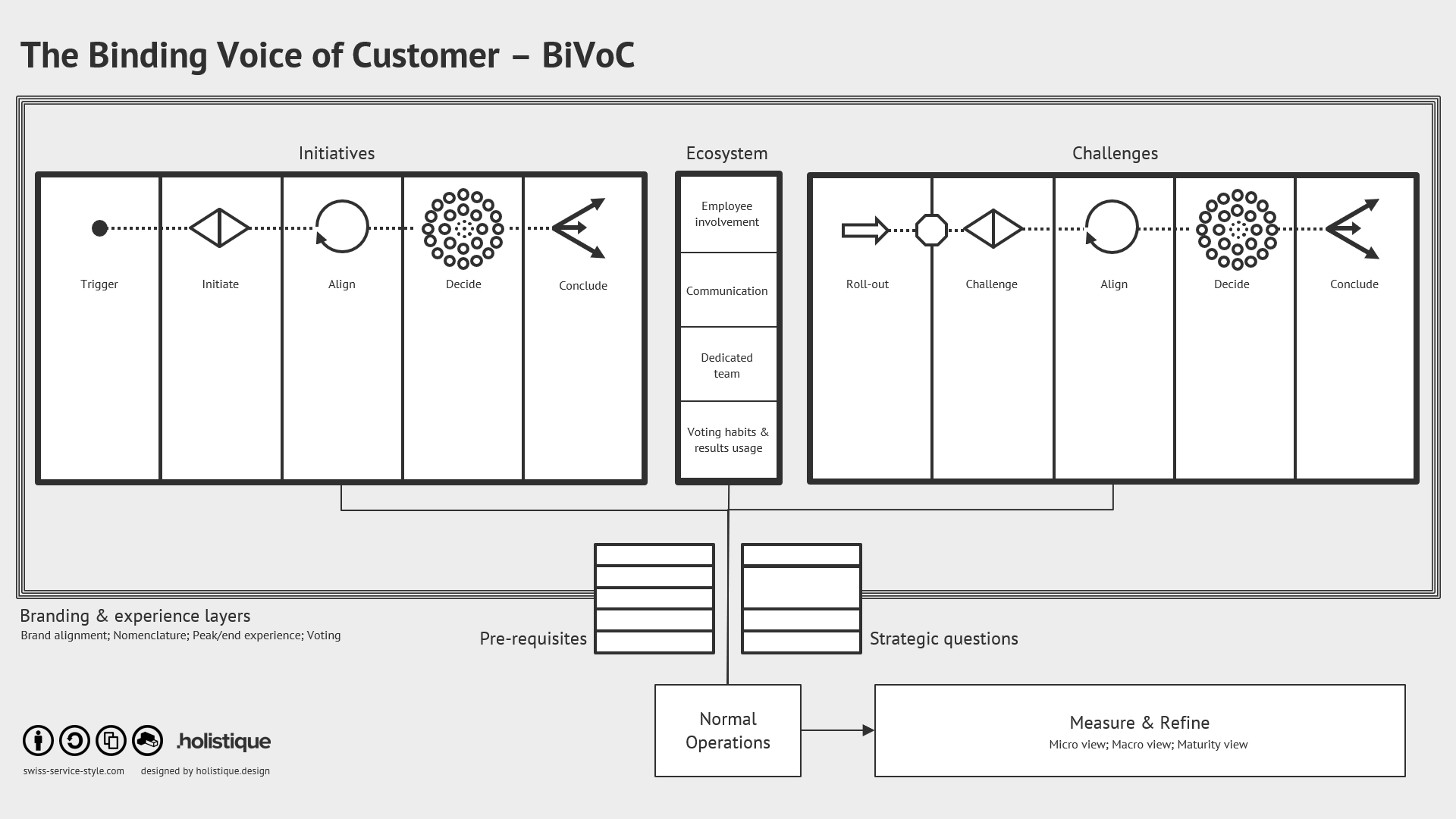As mentioned in the previous post, the Binding Voice of Customer (BiVoC) process is a ‘pre-defined, transparent, binding process to implement proactive customer proposals’. This consists of 7 main elements, and can be neatly placed on a sort of canvas (see larger version here).

Let’s see what the 7 main elements are in 1 sentence each:
- normal operations is just how a company currently functions – BiVoC does not build up a new process from the ground up for the management of a service organization, it just adds to the existing activities.
- pre-requisites are a short list of 5 characteristics that an organization should fulfill to start this type of customer co-creation process
- strategic decisions are the first active part – whereas the previous 2 elements can result from a simple review of the as-is state, it is here that leaders need to consider the to-be state
- initiatives are when customer propose something to an organization
- challenges are when customers react to a decision of the organization
- ecosystem is how the organization is developed to accommodate the BiVoc process, and itself consists of various elements
- branding & experience layer creates a customer-facing service from a so far internal process (this step is often forgotten in organizations for all kinds of processes, not just co-creation)
- measure & refine ensures that the process is tracked and examined after implementation, providing opportunity for future fine-tuning and improvement
These 7 elements ensure that an organization develops a co-creation process where impacts are considered, boundaries are defined, process is planned, the larger context of the organization itself is considered, all this is translated into a customer-friendly service, and is of course measured for future improvement.
I don not believe that this is the final-final visualization of the process. Here is an earlier version, a ‘shitty little first draft’. As you can see, the ‘pre-requisites’ and ‘strategic questions’ were still combined, and the ‘ecosystem’ was missing (although already considered).

There is at least one important missing element, ‘management’, which should probably be part of the ‘ecosystem’. More on this later.
In the next posts I will guide you through these 7 steps in a bit more detail.




















